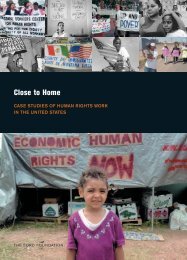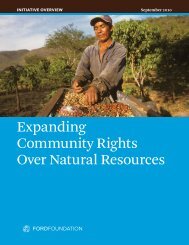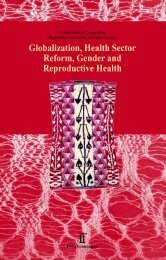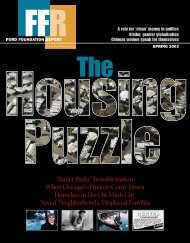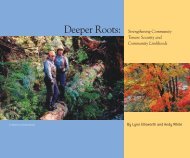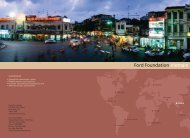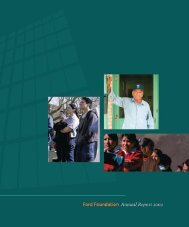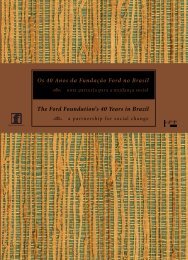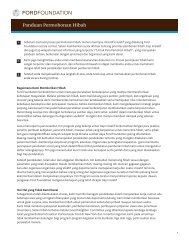Inclusive Scholarship: Developing Black Studies - Ford Foundation
Inclusive Scholarship: Developing Black Studies - Ford Foundation
Inclusive Scholarship: Developing Black Studies - Ford Foundation
Create successful ePaper yourself
Turn your PDF publications into a flip-book with our unique Google optimized e-Paper software.
32 <strong>Inclusive</strong> <strong>Scholarship</strong>: <strong>Developing</strong> <strong>Black</strong> <strong>Studies</strong> in the United States<br />
power,and,fromtimetotime,effortsatarbitration.Lineswerefirmlydrawn,<br />
and few were willing to negotiate. In time, backed by Governor Reagan,<br />
Hayakawa succeeded in reopening the school much on his own terms.<br />
<strong>Black</strong> <strong>Studies</strong>, as an issue, was one element (but by no means the most<br />
important) in the dispute. On December 7, 1968, the <strong>Black</strong> Student Union<br />
rejected Hayakawa’s offer to establish a <strong>Black</strong> <strong>Studies</strong> department under the<br />
direction of Dr. Nathan Hare. The <strong>Black</strong> Student Union wanted a program<br />
with more “autonomy” than Hayakawa would permit, and there were elements<br />
in the union’s demands suggesting a racially separatist model. Conflict<br />
between <strong>Black</strong>s and Hayakawa continued for nearly two years. On<br />
March 1, 1969, Hare announced that he had received a letter from<br />
Hayakawa stating that he would not be rehired in June. In June, four of the<br />
college’s six <strong>Black</strong> administrators resigned, charging Hayakawa with racism.<br />
On November 2, 1969, Hayakawa accused the <strong>Black</strong> <strong>Studies</strong> department of<br />
a “reign of terror” and threatened to disband it, claiming that it was both<br />
authoritarian and anarchistic. By Christmas 1969, he had again threatened<br />
to close it and to put worthy courses under other departments. The bickering<br />
continued until March 3, 1970, when the entire <strong>Black</strong> <strong>Studies</strong> faculty<br />
was ousted because the department’s hiring, retention, and tenure committee<br />
reports were turned in only an hour before the deadline. 15<br />
Cornell University<br />
The first evidence of serious racial discord at Cornell came as early as January<br />
1968, when a <strong>Black</strong> student successfully challenged the validity of a<br />
psychiatric examination that had been administered by a White person. In<br />
April of that year, <strong>Black</strong> students protested the “covert racism” of a visiting<br />
professor of economics, Michael McPhelin. Getting no results from the<br />
economics department or the dean, the students disrupted McPhelin’s class<br />
by reading a statement. This brought about a judicial action against the students,<br />
protests of the resulting punishments, and, finally, the occupation by<br />
a hundred <strong>Black</strong> students of the student union building. The occupation of<br />
Willard Straight Hall occurred in April 1969, a full year after the initial<br />
event. In the course of this occupation, the students armed themselves and





